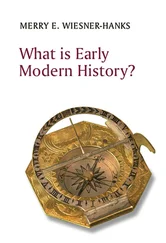R. Nisbet Bain - The Cambridge Modern History
Здесь есть возможность читать онлайн «R. Nisbet Bain - The Cambridge Modern History» — ознакомительный отрывок электронной книги совершенно бесплатно, а после прочтения отрывка купить полную версию. В некоторых случаях можно слушать аудио, скачать через торрент в формате fb2 и присутствует краткое содержание. Жанр: unrecognised, на английском языке. Описание произведения, (предисловие) а так же отзывы посетителей доступны на портале библиотеки ЛибКат.
- Название:The Cambridge Modern History
- Автор:
- Жанр:
- Год:неизвестен
- ISBN:нет данных
- Рейтинг книги:4 / 5. Голосов: 1
-
Избранное:Добавить в избранное
- Отзывы:
-
Ваша оценка:
- 80
- 1
- 2
- 3
- 4
- 5
The Cambridge Modern History: краткое содержание, описание и аннотация
Предлагаем к чтению аннотацию, описание, краткое содержание или предисловие (зависит от того, что написал сам автор книги «The Cambridge Modern History»). Если вы не нашли необходимую информацию о книге — напишите в комментариях, мы постараемся отыскать её.
The first series was planned by Lord Acton and edited by him with Stanley Leathes, Adolphus Ward and George Prothero.
The Cambridge Modern History Collection features all five original volumes:
Volume I: The Renaissance
Volume II: The Reformation, the End of the Middle Ages
Volume III The Wars of Religion
Volume IV: The 30 Years' War
Volume V: The Age of Louis XIV
The Cambridge Modern History — читать онлайн ознакомительный отрывок
Ниже представлен текст книги, разбитый по страницам. Система сохранения места последней прочитанной страницы, позволяет с удобством читать онлайн бесплатно книгу «The Cambridge Modern History», без необходимости каждый раз заново искать на чём Вы остановились. Поставьте закладку, и сможете в любой момент перейти на страницу, на которой закончили чтение.
Интервал:
Закладка:
Julius was disturbed in the enjoyment of his victorious sojourn at Bologna by the news that the French King was coming in person with a large army to punish his rebellious city. Himself a native of Savona and a favourer of the popular party in Genoa, the Pope, while opposed to the coercion of Genoa, feared also ulterior designs of the French King. The ambition of the Cardinal of Rouen was well known, and it could only be satisfied at the expense of the existing pontiff. In alarm Julius withdrew to Rome, where he followed events in the north with anxiety. The King, with nearly 10,000 Swiss, and an army apparently disproportionate to his task, was at Asti on April 16, 1507. His troops at once moved on Genoa, by Buzalla. The command of the army was in the hands of Charles d’Amboise. On the $5th of April he began the attack, ordering the capture of a bastion planted on the highest point of the hills surrounding Genoa, and commanding the whole position. The access was very difficult, and the Swiss disliked the task. However, they were shamed into doing their duty by a troop of dismounted men-at-arms who advanced to the assault. When the place at length was reached the Genoese took to flight without further resistance, but many of the assailants were wounded on the way. After some scattered fighting, that night the army held the heights overlooking Genoa, The next dayenvoys were sent to treat, but while terms were being discussed warlike views prevailed within the town, and the whole force of Genoa came out to fight. They were enticed to attack the well-ordered mass of the French infantry, and driven back in panic to their walls. The next day the citizens accepted the King’s terms of unconditional surrender. On the 28th he rode into the town with drawn sword, cancelled the city’s privileges, imposed on them a fine of 300,000 ducats, ordered a new castle to be built, and pay for a garrison of 2,000 foot to be henceforth provided. While imposing on Genoa his will he was careful to preserve it from plunder or outrage. Paolo da Novi fled, but was shortly afterwards captured and put to death.
The fears that had disturbed Julius when he heard of the powerful expedition against Genoa proved vain. Nothing was attempted, if anything had been imagined, against the Holy Father. But the interview at Savona (June, 1507), which followed shortly, was calculated to cause him not less serious alarm. Ferdinand had sought, but had not received, the investiture of Naples, and had shown his resentment by avoiding an interview at Ostia, which the Pope had wished. We do not know what the Kings may have discussed at Savona; the secrecy observed at the time still baffles the curiosity of investigators. There was grave matter for deliberation. Maximilian, the inveterate enemy of Louis, and the rival of Ferdinand for the regency of Castile, was making serious preparations for a descent into Italy, with tha-ostensible purpose of obtaining the imperial crown, and the probable intention of driving the French from Milan. Common measures may have been considered against this common foe; joint action against Julius may also have been proposed. But the document from Simancas published by Maulde seems to prove that the Kings finally decided to attempt a league in which Julius and Maximilian should be included as friends. The careful exclusion of all other powers from the projected league seems to indicate an intended victim, to whose sacrificial feast all four could be invited, with the prospect, if not the certainty, of a favourable reply. The oath of Louis at Savona foreshadows the League of Cambray. Venice is not mentioned, but no other solution satisfies the conditions of the enigma.
Venice had indeed run up a long account with the powers of Italy and Europe. Since 1495 she had held Brindisi, Otranto, and other ports of Apulia, and thus mutilated Ferdinand’s new acquisition. By treaty with France and by older conquest she held the eastern portion of the duchy of Milan. Against Julius she held Rimini and Faenza, as well as her earlier possession, Ravenna. There had also been acrimonious discussion about the right of collation to Venetian prelacies, such as Vicenza and Cremona. Maximilian’s imperial rights were ignored in Padua and Verona, his hereditary rights in Friuli. She had recently refused to Maximilian free passage with his army through her territory for his coronation at Rome. She had declined to renew her league with France, declaring the old league sufficient. The day of reckoning was at hand.
If such a league as that of Cambray was projected at Savona, Maximilian’s unconcerted action assisted the plan. Enraged at the repeated refusals of Venice to grant him a free passage, he attacked the republic in February, 1508. The fortunes of war were against him. The French stood by their ally. Pitigliano held his own in the Veronese, while Alviano in the east took Gorz and Trieste in the hereditary lands of the enemy and threatened a further advance. The “elected Roman Emperor,” as he now called himself, was fain in June to conclude for three years a humiliating truce, by which Venice retained her conquests. In this truce the King of France was himself included, and he wished the Duke of Gelders, his own ally, and Maximilian’s obdurate enemy, to be also comprised; but Venice, with unusual imprudence, allowed the wishes of her reputed friend to remain unsatisfied.
This inconsiderate conduct was an excuse, if not the reason, for the decided adhesion of France to the enemies of the Republic. We catch glimpses, during the eighteen months that followed the meeting of Savona, of the negotiations which led Maximilian to forget all the painful associations of slight or wrong connected with Milan, Burgundy, Gelders, and Britanny. His new rancour against Venice, the unsuccessful progress of the war in Gelders, the influence of his daughter Margaret, anxious to protect her nephew’s dominions in the Netherlands, which were now entrusted to her charge, the secret and cautious instigations of the Pope,—all urged him towards the league at length concluded at Cambray in December, 1508, by Margaret and the Cardinal of Rouen. After a temporary settlement of the affairs of Gelders, a league was there secretly compacted, purporting to include not only France and the Empire, but also the Pope and Aragon. The Cardinal undertook to answer for the Pope; no one spoke for the King of Aragon, but it is probable that a secret understanding already existed. Each power was, by the united action of the league, to recover the places held against it by Venice. Thus Spain would recover Monopoli, Trani, Brindisi, Otranto; the Pope, Ravenna, Rimini, Faenza, and smaller places in the neighbourhood, a list which might be afterwards extended; Maximilian, Verona, Padua, Vicenza, Treviso, Friuli, and generally all places held or usurped by Venice from Austria or the Empire; while France was to receive Brescia, Bergamo, Crema, besides Cremona and the Ghiara d’ Adda, ceded to Venice as her share of the spoils of Ludovico il Moro. The Italian powers were to open the war by the 1st of April, 1509, and Maximilian promised to join them within the space of forty days. The investiture of Milan was to be renewed to Louis for the sum of a hundred thousand crowns, still due under the earlier bargain. England and Hungary were to be invited to join the unwieldy coalition, and each contracting power was given four months for naming its allies.
Venice had long been aware that such a conspiracy would correspond to the Pope’s inmost and deepest wishes, and that similar plans had frequently been discussed between France and Maximilian. She may, notwithstanding, have relied on the jealousies and hatreds of the powers for keeping them apart. Something of the truth, however, reached her soon after the meeting of Cambray. Early news of a more precise order came to her from the great Gonzalo, who offered his services to the Signoria. The results would have been interesting had this remarkable offer been accepted. While negotiations were carried on in the vain hope of detaching the Pope from the alliance, all preparations were hurried forward for resistance. France declared war on the 7th of April; on the 27th the Pope proclaimed his ban. The Venetians had more than 30,000 men on foot, Italian men-at-arms, picked infantry from Apulia and Romagna, with the excellent levies from the Val di Lamone under Dionigi di Naldi, Stradiots from Illyria and the Morea, Sagdars from Crete, and a considerable force of native militia. Of the allies, the French were first in the field, opposed on the Adda by the Venetians under Pitigliano and Alviano. The impetuous character of the latter was ill-yoked with the Fabian strategy of his colleague, and the policy of the Signoria was a compromise between the two. Alviano proposed to cross the Adda and take the offensive. This plan having been set aside, Pitigliano determined to recover Treviglio, which had given itself to the French. The place was captured and burned, but, owing to the delay thus caused, the Venetians were not ready to prevent the French from crossing the Adda at Cassano. The Venetian orders were to run no unnecessary risk. Thus the French were allowed to capture Rivolta undisturbed. But when (May 14) Louis began to move southwards towards Pandino, and threatened to cut off Venetian communications with Crema and Cremona, the Venetians hurried to anticipate him. The light horse were sent on to occupy Pandino and Palazzo, and the main force followed along the higher ground, while the French moved by the lower road parallel to the Adda. Between Agnadello and Pandino the French found an opportunity to attack the Venetian columns on the march. By this time the Venetian army was spread over some four miles of ground, the artillery was not at hand, and Alviano, who was not present when the fight began, was only able to bring into action a small portion of the heavy-armed horse and a part of the infantry. It is not certain whether he could have refused battle, it is certain that he did not expect it. Nor is it clear whether the French movement on Pandino was a feint, or whether their attack was an afterthought, when the movement on Pandino had failed. It is certain that the French were able to throw the whole weight of their force on a part of the Venetian army. Aided however by the higher ground and the vineyards which clothed the slope, the Venetians held their own for awhile, and even gained some advantage. But when the main battle of the French came up, while Alviano received no further support, the day was lost. The losses fell chiefly on the levies raised by conscription from the Venetian peasantry, who did well. Alviano’s own band of infantry from Brisighella was almost annihilated. He was himself captured, fighting desperately. Pitigliano, with the main body of men-at-arms, was able to retreat in good order. But a great part of the army was broken and fled. Thirty-six pieces of ordnance were left behind and fell into the hands of the enemy. Pitigliano at Brescia endeavoured to collect and reorganise the remnant of his army. But the demoralisation was great, and the troops refused to remain with the colours, deserting in numbers as soon as they received their pay.
Читать дальшеИнтервал:
Закладка:
Похожие книги на «The Cambridge Modern History»
Представляем Вашему вниманию похожие книги на «The Cambridge Modern History» списком для выбора. Мы отобрали схожую по названию и смыслу литературу в надежде предоставить читателям больше вариантов отыскать новые, интересные, ещё непрочитанные произведения.
Обсуждение, отзывы о книге «The Cambridge Modern History» и просто собственные мнения читателей. Оставьте ваши комментарии, напишите, что Вы думаете о произведении, его смысле или главных героях. Укажите что конкретно понравилось, а что нет, и почему Вы так считаете.












